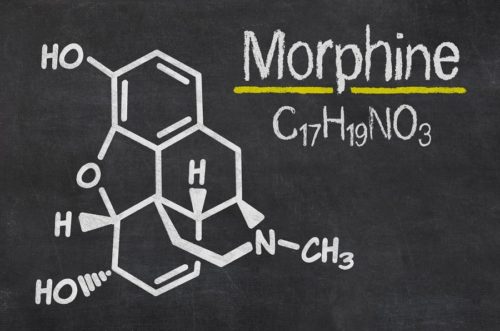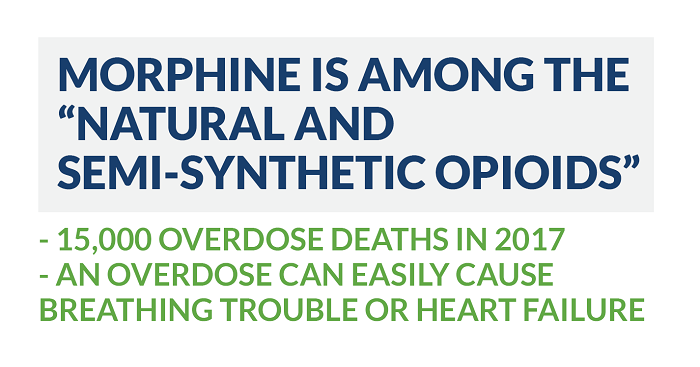Read the latest and greatest from our team
of incredible specialists.

Beach House Recovery Center » Blog » Morphine Addiction and Abuse Statistics
The name morphine is derived from the Greek god Morpheus, “the god of dreams.” Ironically, the debilitating effects of the drug often become a living nightmare—especially for chronic users. Morphine is a naturally occurring opiate used for the management of severe pain. Designated a Schedule 11 highly addictive narcotic by the Drug Enforcement Administration (DEA), it is usually reserved for the treatment of post-surgical or cancer-related pain. Morphine is available in tablet, syrup, or injection form, and may also be smoked or snorted.
Morphine’s euphoric, dreamlike effects have increased its popularity as an illicit recreational drug, and it is sold on the street under the following monikers:

Morphine is renowned for its pleasurable, analgesic effects and frequently abused by those suffering from severe, chronic pain after being legitimately prescribed the drug. Its highly desirable effects include:
These same, short-term benefits are exactly what lead to its rampant abuse and prevalence on the black market. Whenever morphine is obtained without a prescription through a legitimate medical channel, it is considered a criminal offense and abuse— usually a felony depending upon the location, circumstances, and amount found in possession. Morphine dealers, in particular, place themselves under the threat of serious legal penalties for drug trafficking, which includes lengthy incarceration.
Irrespective of whether or not the drug was legitimately prescribed—all morphine users risk overdose and other life-threatening complications. Morphine is considered a potent central nervous system (CNS) depressant, and signs of overdose may include:
Even moderate morphine abuse produces significant adverse reactions. Some users develop what they initially perceive to be a safe, smooth “tolerance” to the opiate, but suddenly find themselves struggling with the following symptoms:
After a sustained period of morphine abuse, a user inevitably develops (actual) tolerance to the drug and requires increasing doses and frequency of use in order to sustain the same desirable effects. This physiological and psychological dependence makes it extremely difficult for users to quit despite a genuine desire to, producing withdrawal symptoms that range from mildly uncomfortable to totally debilitating.

Like heroin, morphine is considered one of the most stubborn, difficult addictions to overcome, and quitting cold turkey is extremely dangerous. Sudden removal of the drug from the morphine-tolerant body can cause precipitated withdrawal— the rapid acceleration and intensification of symptoms that frequently results in severe trauma and, in some cases, death.
Adding to the already significant dangers associated with morphine is its unpredictable mixture with other legal or illicit drugs. For example, taking morphine and alcohol simultaneously can result in a coma, dangerously slowed cardiovascular function, or extreme disorientation that leads to seriously impaired judgment and potentially fatal consequences.
According to the Centers for Disease Control and Prevention (CDC) and National Institute on Drug Abuse (NIDA), approximately 10 percent of the US population has misused an opiate. Although it is difficult to accurately quantify the exact number of morphine users due to the magnitude of the national opiate crisis, the following statistics paint a dire portrait:
Morphine addiction, like that of other substances, responds best when treated early and aggressively. In fact, long-term treatment outcomes always improve with professional medical supervision and clinically focused care. Modern medical technology allows treatment professionals to provide client-specific pharmacological interventions geared toward safely removing the drug from the system while addressing co-occurring disorders like anxiety and depression that are commonly associated with morphine addiction. Ongoing one-on-one and group therapy, and continuing care under the guidance of a licensed therapist, are also integral aspects of treatment designed to support behavioral health and reintegration.
Morphine addiction is a serious, debilitating disease that knows no ethnic, cultural, racial, religious, professional or gender-based boundaries. Contrary to popular misconception, someone does not have to suffer from a known genetic tendency toward substance abuse in order to fall victim, nor does one have to demonstrate a prior history of use. Morphine is potent by virtue of its chemical composition and highly addictive properties—even without precipitating factors. If you or someone you love is suffering from morphine addiction, call a substance abuse professional today. The help you need is only a phone call away!
For more about morphine addiction and recovery, check out these related articles:
Sources:
The Oncologist. The Molecular Perspective: Morphine. October, 2004.
British Journal of Pain. Basic opioid pharmacology: an update. Feb, 2012.
Journal of Anesthesia History. The Chemical History of Morphine: An 8000-year Journey, from Resin to de-novo Synthesis. April, 2017.
Journal of Pain and Symptom Management. Relationships Among Morphine Metabolism, Pain and Side Effects During Long-Term Treatment. Jan, 2003.
The New England Journal of Medicine. Morphine, Gabapentin, or Their Combination for Naturopathic Pain. March, 2005.
Whether you’re researching for yourself or a loved one, Beach House can help. We understand that this is a serious time in your life and that the treatment center you choose matters. We want you to feel comfortable and empowered to make the right decision for yourself, a friend, or a family member. This is why a counselor is waiting and available to answer your questions and help put your mind at ease regarding the next steps. Many of the staff at Beach House have walked in your shoes. If you feel you’re ready or want more information about how to help a loved one, we can help today. You can also learn why we are voted the #1 rehab for addiction treatment in Florida.
We accept most major insurance plans and can verify your benefits quickly and confidentially.
We’re committed to helping you access the care you need, our admissions counselors can guide you through your coverage options and available resources.





"*" indicates required fields